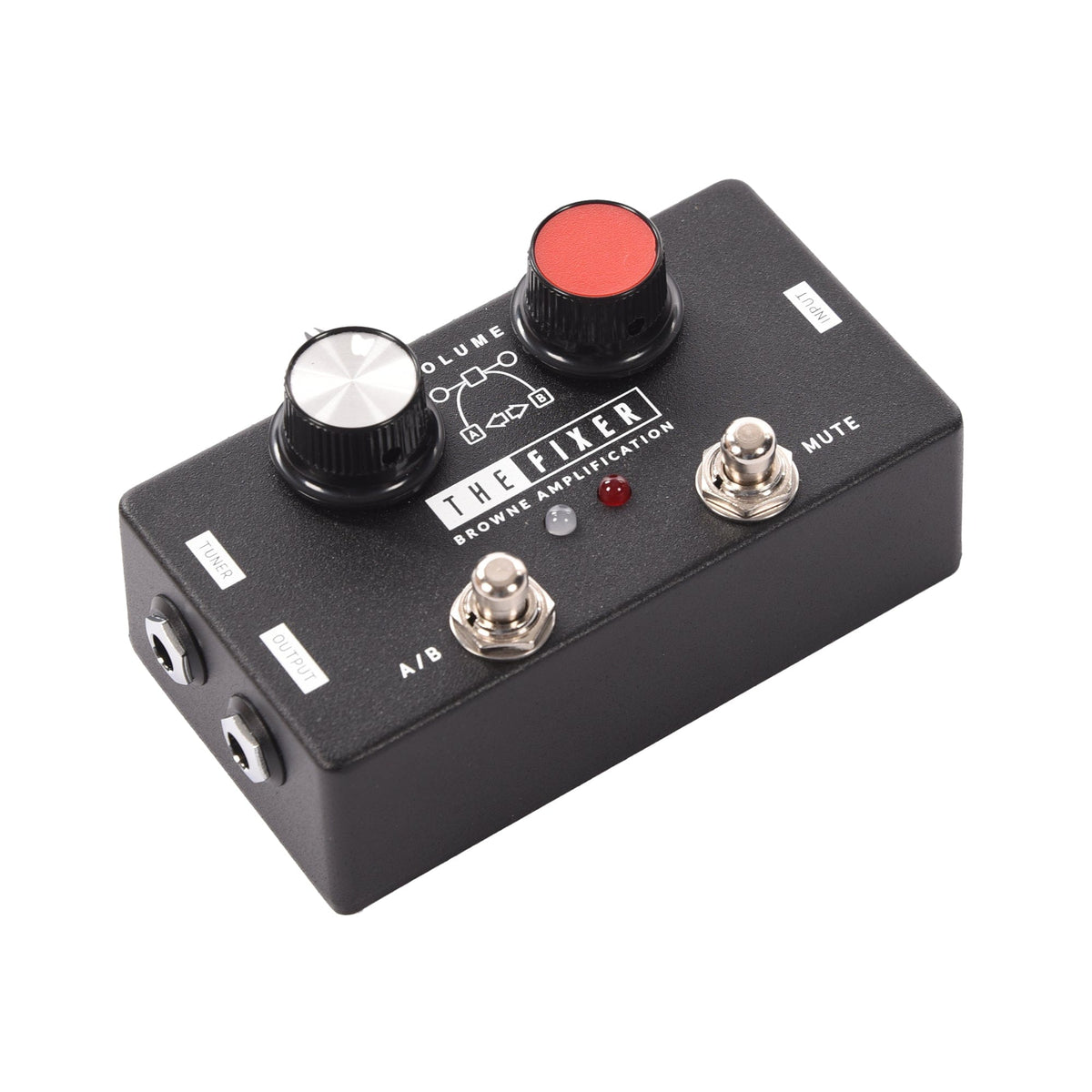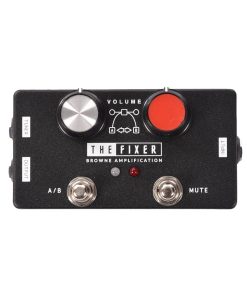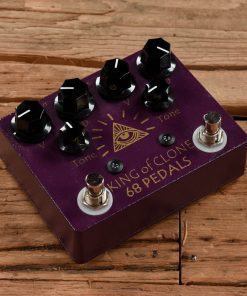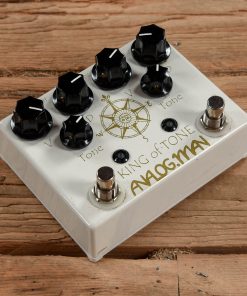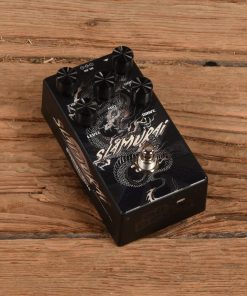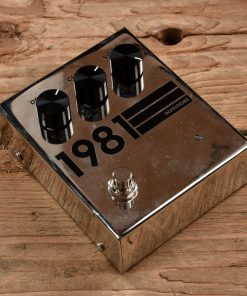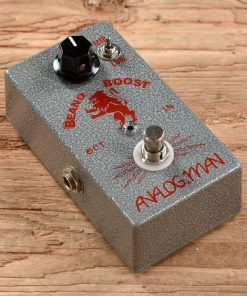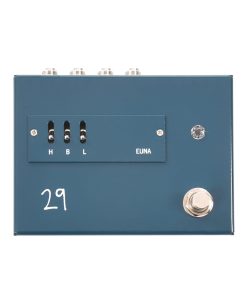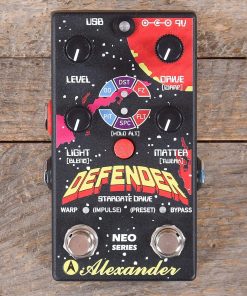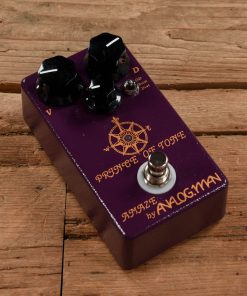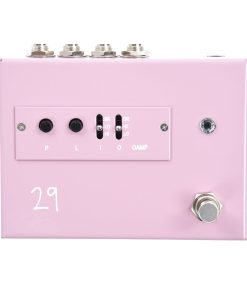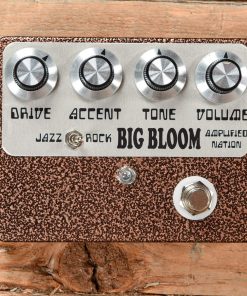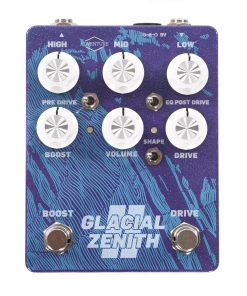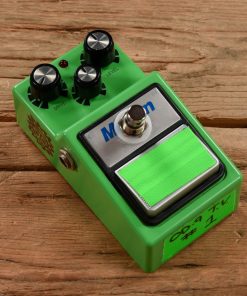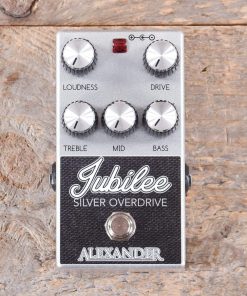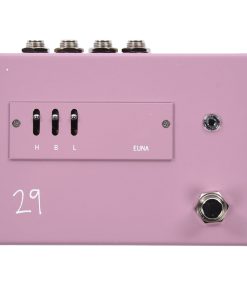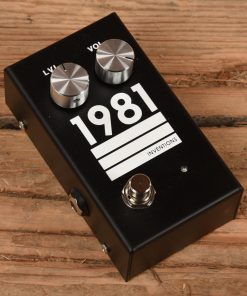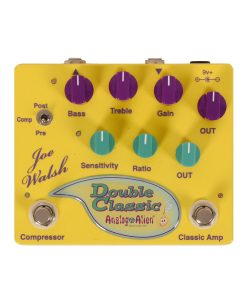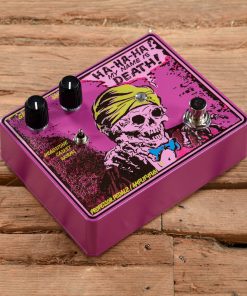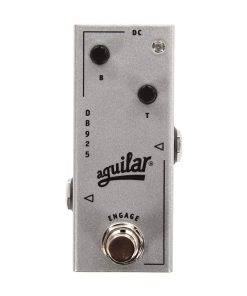Browne Amplification The Fixer Dual Boost/Buffer Pedal Browne Amplification
$ 149,00 $ 59,60
Every guitarist loves buying pedals, we can’t help it. Show us a flashy new pedal and we will sell a vital organ to make sure we can take it home. But, just like putting tires on your car, there are those supporting actors that are necessary for the leading roles to shine. Enter THE FIXER. He’s not flashy and doesn’t need the spotlight or recognition, but he will make sure all your other pedals shine while making it easier for you to reach for that second guitar that you’ve been neglecting.
THE FIXER is part buffer, part booster, and all about how it makes your guitar feel. There are two different boost circuits. Why you may ask? How many times have you dialed in your tone to perfection and then reached for another guitar only to realize that the difference in output has changed how our drives and amp respond? FIXED. Need an always-on output for your tuner but also want a way to mute your signal chain to switch guitars? FIXED. Need a high-quality buffer to fix the impedance issues created by the dozens of guitar pedals on your board? FIXED.
After years on the road as a tech for some of the best guitarists out there, Dave realized the need for a pedal that would allow you to switch guitars without drastic changes in volume and tone. That’s why THE FIXER has two identical boosts. Not only do these boosts help to make up the slight gain loss from our favorite buffer but they also provide the option to add a bit more oomph to your signal if you so desire. Set your gain to perfection with your favorite humbucker guitar, then hit the mute switch, grab that vintage strat, boost the gain up to match your high output guitar and play on.
The unsung hero in this pedal, however, is the buffer. Buffers are tricky and opinions abound. A buffer can bring the life back to a long signal chain or thin out your tone and make it feel stiff. We made a buffer that we actually like and think you might too. Even if you aren’t getting fancy with the boosts, the buffer in this pedal will make your whole rig “feel” better. More responsive tighter lows, and smoother highs while fixing the impedance issues like a buffer should. You might even forget it’s there, but when you take it out, you’ll wonder what happened to your tone.
Fast Shipping with Professional Packaging
We offer a wide range of shipping options due to our long-standing partnerships with UPS, FedEx and DHL. Our warehouse staff are trained to pack your goods exactly according to the specifications we offer. Before shipping the goods are thoroughly examined and secured. Every day, we send thousands of packages to clients from all over the world. Our determination to be the biggest online retailer in the world is shown by this. The warehouses are located in Europe as much as they are in USA.
Note: Orders with more than one product will be assigned a distinct processing time, dependent on the particular item.
Before shipping, we will examine the items ordered thoroughly before sending the items. The majority of orders are shipped within 48 hrs. The delivery estimate is between 3-7 days.
Returns
The stock is constantly changing and cannot be fully controlled by us because of the involvement of several parties including the factory and our warehouse. Stock levels can fluctuate at any given time. Please be aware that it is possible that your order could become unavailable even after you've placed your order.
Our policy is valid for a period of 30 days. If 30 days have passed by since your purchase however, we're unable to give an exchange or refund.
In order to be eligible for a refund your product must be unopened and in the same state as you received it. It should also be in the original package.
Related products
Effects and Pedals / Overdrive and Boost
Effects and Pedals / Overdrive and Boost
Effects and Pedals / Overdrive and Boost
Effects and Pedals / Overdrive and Boost
Effects and Pedals / Overdrive and Boost
Effects and Pedals / Overdrive and Boost
Effects and Pedals / Overdrive and Boost
Effects and Pedals / Overdrive and Boost
Effects and Pedals / Overdrive and Boost
Effects and Pedals / Overdrive and Boost
1981 Inventions DRV Overdrive Black Hyperfade 1981 Inventions
Effects and Pedals / Overdrive and Boost
Effects and Pedals / Overdrive and Boost
Analog Alien Alien Tone Dragon Overdrive/Boost Pedal Analog Alien
Effects and Pedals / Overdrive and Boost
Effects and Pedals / Overdrive and Boost
Effects and Pedals / Overdrive and Boost
Adventure Audio Glacial Zenith V2 Purple Sparkle Overdrive 3 Band EQ Boost Adventure Audio
Effects and Pedals / Overdrive and Boost
Analogman King of Tone V4 with Both Side High Gain Option Analogman
Effects and Pedals / Overdrive and Boost
Effects and Pedals / Overdrive and Boost
Effects and Pedals / Overdrive and Boost
Effects and Pedals / Overdrive and Boost
Effects and Pedals / Overdrive and Boost
Analog Alien Rumble Seat Overdrive/Delay/Reverb Pedal Analog Alien
Effects and Pedals / Overdrive and Boost
Effects and Pedals / Overdrive and Boost
29 Pedals Special Run Crunch Berry EUNA Elite Unity Amplifier Input Driver 29 Pedals
Effects and Pedals / Overdrive and Boost
Effects and Pedals / Overdrive and Boost
Analog Alien Joe Walsh Double Classic Overdrive Pedal Analog Alien
Effects and Pedals / Overdrive and Boost
Effects and Pedals / Overdrive and Boost
Effects and Pedals / Overdrive and Boost
Abominable Electronics Oppressive Cult Destroyer Abominable Electronics
Effects and Pedals / Overdrive and Boost
Effects and Pedals / Overdrive and Boost
Effects and Pedals / Overdrive and Boost
Effects and Pedals / Overdrive and Boost
Alexander Pedals Jubilee Silver Overdrive Pedal Alexander Pedals

